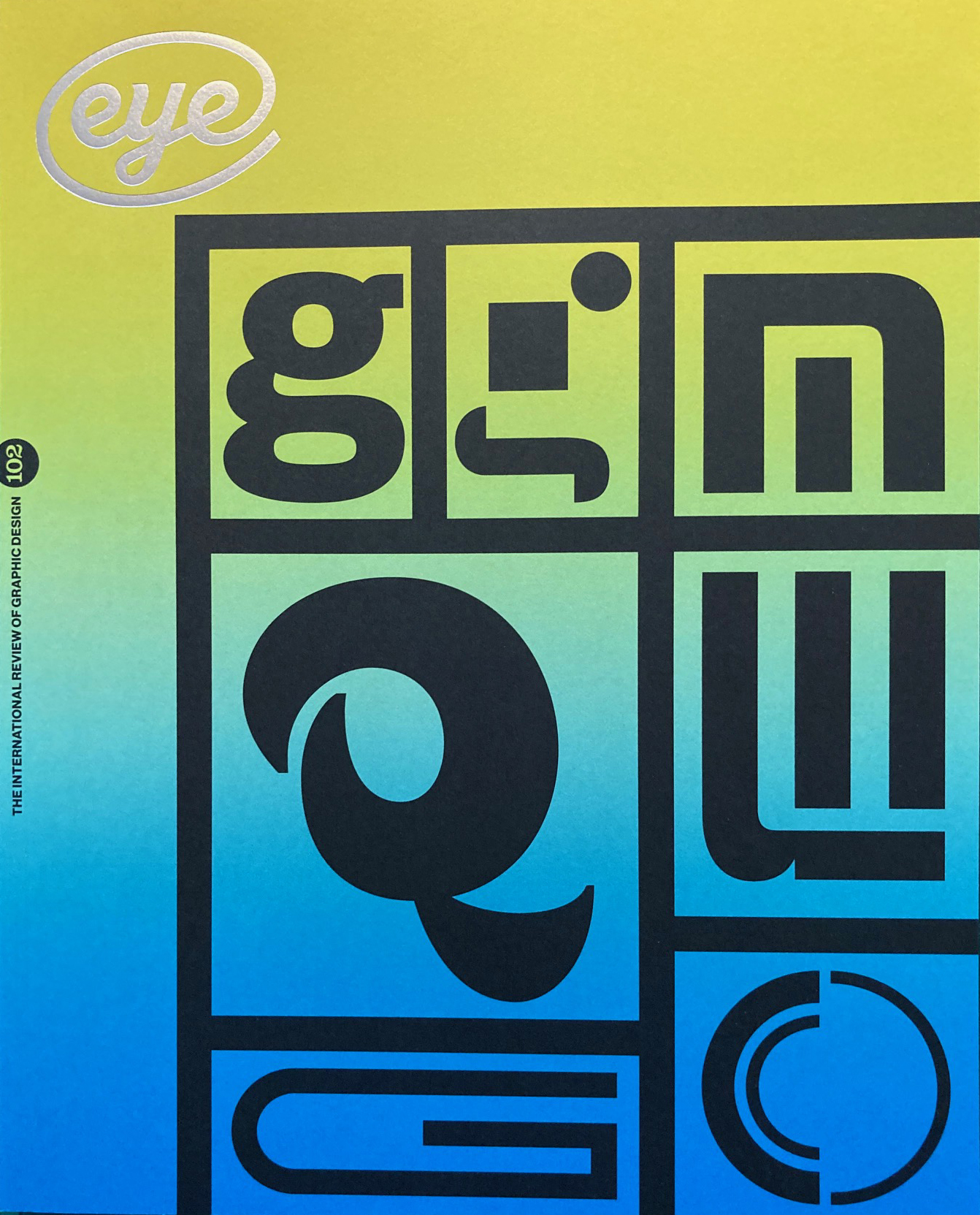Autumn 2021
Typographics 21: Session 9
29 June 2021. Simon Charwey, host.
Fungi Dube
‘Threads: Writing and Graphic Systems Embedded in African Textiles’Taurai Valerie Mtake, Nhaka Creative Agency, TaVaTake Designs
‘Indigenous Knowledge of the Bantu Symbol Writing’Tapiwanashe Sebastian Garikayi, Stype Foundry
‘The Sankofa in the Afrikan writing system journey’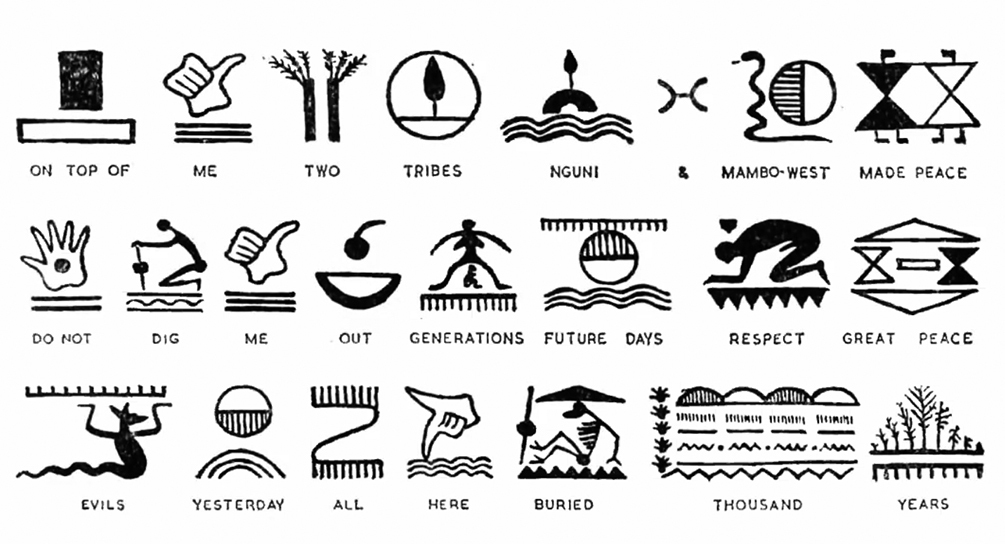
Simon Charwey, a Ghanaian brand identity designer whose work is entirely inspired by Afrikan symbols and writing systems, curated and hosted this session featuring three designers from Zimbabwe. The thread connecting the three is a love for Afrikan writing systems.
Fungi Dube was first on. She made connections with popular textiles – Kente, Bogolan (mud cloth), Adinkra and Kuba cloth – and showed how writing systems are encoded within them.
Photograph of a Ghanaian tribal elder wearing Adinkra cloth, from Fungi Dube’s presentation about Adinkra symbols and their meanings. Top. Bantu (or Nguni) symbol writing presented in the ‘Typographics 21’ talk by Taurai Valerie Mtake of TaVaTake Designs (Zimbabwe): ‘Each symbol represents not a single character or letter, but a whole word or complete idea.’
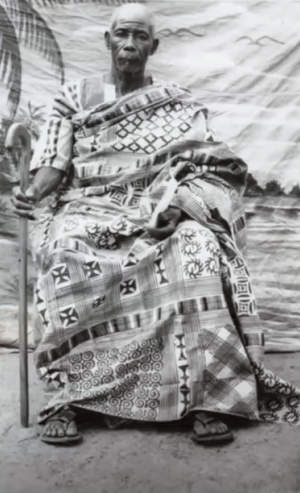
Next up was Taurai Valerie Mtake whose area of interest is Bantu writing symbols from South Afrika, now popularly known as Nguni writing symbols in recognition of the people who invented them. An ex-student of mine, she was inspired by my book Afrikan Alphabets (2006, see Eye 53), which was in turn inspired by the seminal book Indaba, My Children by Credo Mutwa who died last year at 99. He was a sangoma or medicine man.
Mtake has also created a children’s game using Nguni writing symbols. While Fungi Dube’s textiles are ideographic, Taurai’s Nguni symbols are more like Chinese and Japanese symbols, which stand for a whole word or a complete idea. The characters are arranged in a sequence: Man+sees+Lion. Lion+eats+Ox.
Taurai Valerie Mtake’s logo for Thandiwe, a contemporary Afrikan lifestyle brand founded in 2020 by Leslie Thandiwe. The logo, says Mtake, ‘combines the Afrikan symbols of lust, love and passion.
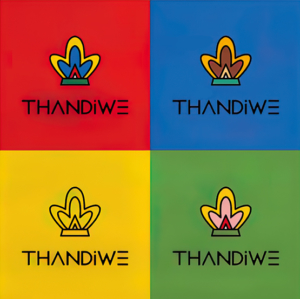
Last but not least was type designer Tapiwanashe Sebastian Garikayi, who designs typefaces from Afrikan writing systems. He works with writing systems from all over Afrika, but his favourite is the Mwangwego script from Malawi. This is a contemporary script invented in 1979. Tapiwa is working with the inventor, Nolence Mwangwego, to standardise it as a digital typeface. He has also worked with Nko, Medefaidrin and Bamum.
All three speakers are members of the Pan-Afrikan Design Institute (PADI), formed in 2017, which has members from all over Afrika. Afrikan designers now have an umbrella organisation representing them and enabling them to speak with one voice. It is also now easier to reach Afrikan designers and to have them speak at international events like ‘Typographics 21’.
Glyphs by Tapiwanashe Sebastian Garikayi (Zimbabwe) for the Mwangwego script from Malawi (1979).
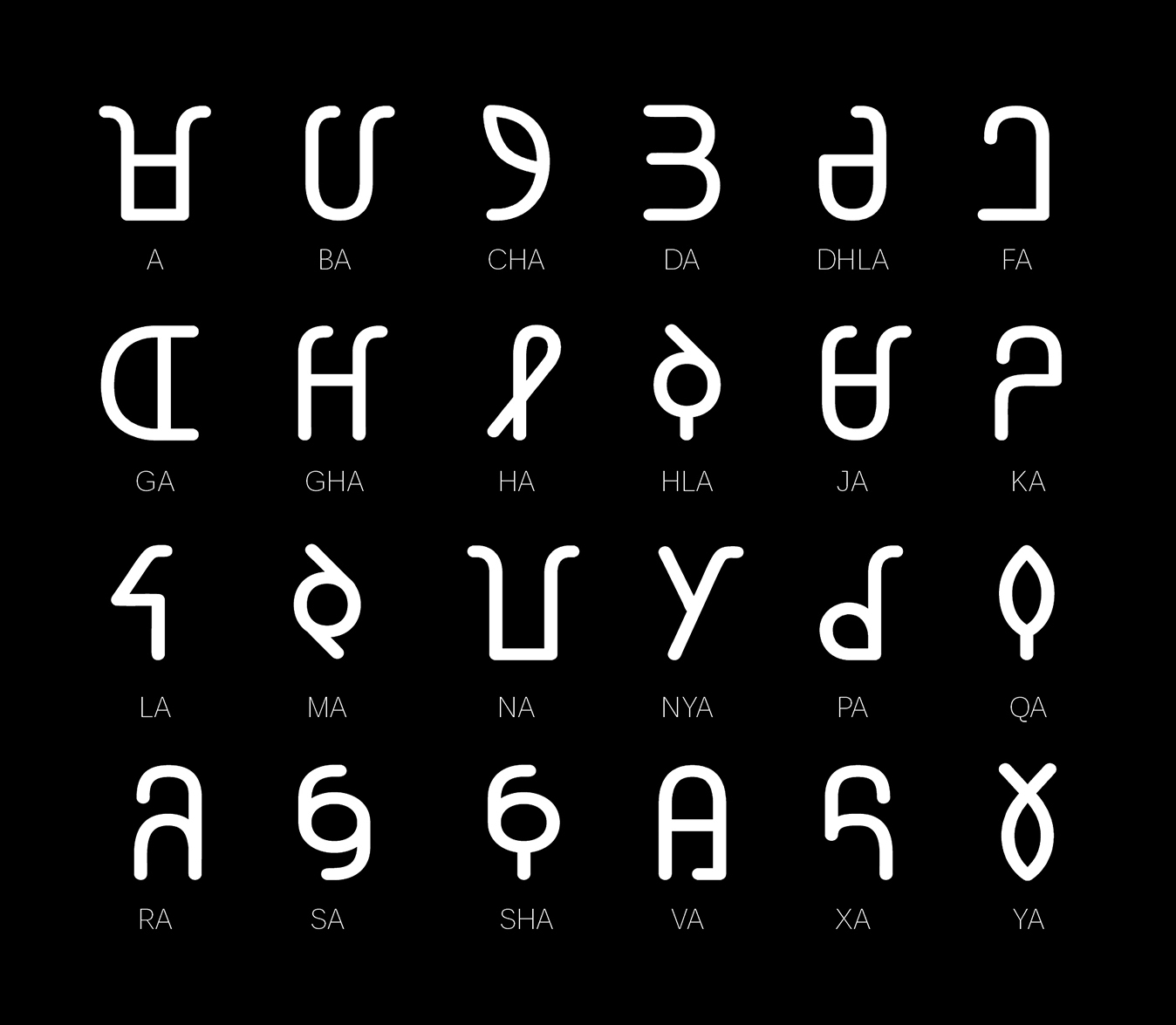
In Afrikan Alphabets, I wrote about the stereotype that ‘Afrikans have no written tradition,’ stating that ‘Afrikans have known writing since the very early history of humanity.’ Now, in 2021, I could not be happier to see this new generation of young designers who are taking the baton and running with it.
Saki Mafundikwa, founder’and director, Zimbabwe Institute of Vigital Arts
First published in Eye no. 102 vol. 26, 2021
Eye is the world’s most beautiful and collectable graphic design journal, published for professional designers, students and anyone interested in critical, informed writing about graphic design and visual culture. It is available from all good design bookshops and online at the Eye shop, where you can buy subscriptions and single issues.

